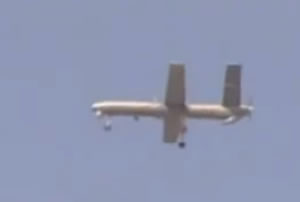

In recent weeks Iran has introduced new guided weapon systems claimed to be based on indigenous developments. Among these weapons are the Shahed 129 attack Unmanned Aerial Vehicle (UAV), precision guided version of the Zelzal medium range rocket, and Taer medium-range air-defense missile, positioned to be a precursor for the country’s new category of air defense weapon systems.
Major General Mohammad Ali Jafari, Commander of the Islamic Revolution Guards Corps introduced the Shahed 129 UAV in September 2012. Shahed 129 described as a ‘clone of the Israeli Hermes 450’ was developed by the corps’ military production facilities can carry can the Sadid guided missile it can carry.
Is the Iranian Shahed a reversed engineered hermes 450? If so, what are the implications for Israel’s UAV fleet? Sign up for Defense-Update Premium Account to know more…
In 2010 Iran unveiled an optionally piloted helicopter designated Shahed 285 at the 4rd International Iran Kish Air Show. This helicopter was based on the larger Shahed 278 naval attack helicopter, which can carry up to eight Sadid-1 guided missiles. These missiles are similar in diameter and container size to the Israeli Spike LR missile.

The maximum takeoff weight of the Shahed 285 as reported by the Iranians, is 1.45 ton, based on an empty (dry) weight of 820 kg, leaving 630 kg for fuel, payload and potentially, a single crew member. The heli-drone has a maximum speed of 225 km/h and mission endurance of five hours, sustaining mission range of 875 km. The hover ceiling out of ground effect is 2,040 meters and service ceiling is 4,160 meters.

In 2010 Iran unveiled another unmanned aircraft capable of carrying weapons – the Karrar. Few months later, in February 2011, Iran inaugurated the production line of two other locally designed UAVs with bombing and reconnaissance capabilities. These two drones were named Raad (Thunder) and ‘Nazir’ (Harbinger). Both were designed to conduct long-range reconnaissance, patrolling, assault and bombing missions with high precision.
Iran Flexing Muscles: (Subscriber version)
- Part 1: Combat UAVs
- Part 2: a New ‘Stealth’ Frigate
- Part 3: Air Defense & Ballistic Missiles
















